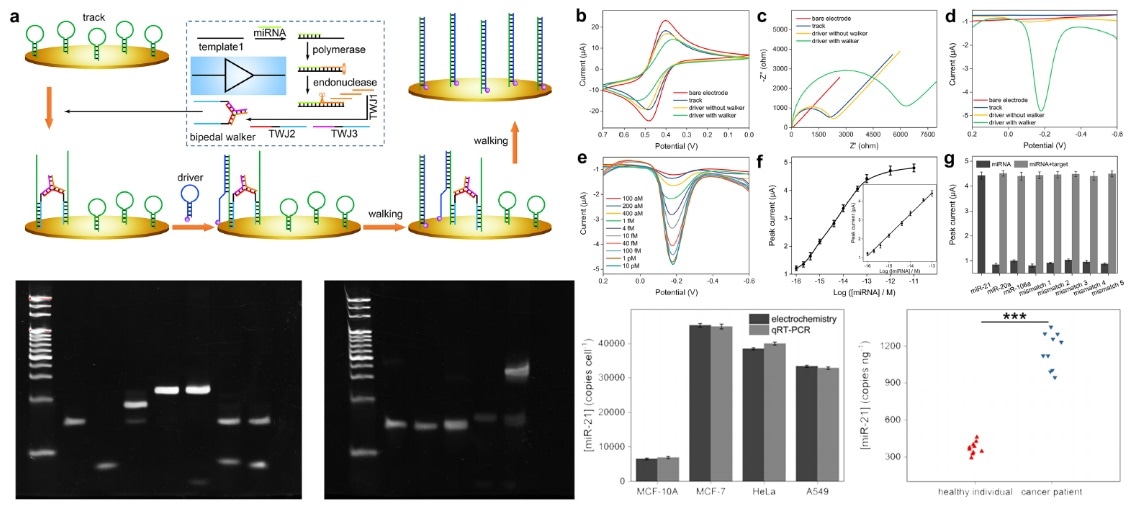An extensive array of complex secondary structures can be designed and assembled based on complementary base pairing rules, to produce DNA molecular devices with distinct functions that play a crucial role in varied research fields.

Bipedal DNA walking-based electrochemical detection of miRNA. Image Credit: SIBET.
DNA logic gates utilize biomolecules (like DNA) or other external information as input, and the output produced is the characterization results induced by the changes in the DNA structures. Following Boolean operations, the mutual identification and correlation of different inputs can be identified.
Additionally, logic circuits or multiple cascaded logic gates are fabricated by utilizing the output of the former logic gate as the input of the latter one. The different combinations and varied output modes make logic circuits viable for use in extensive biomedical applications.
The research team headed by Peng Miao from the Suzhou Institute of Biomedical Engineering and Technology (SIBET) of the Chinese Academy of Sciences created a new bipedal DNA walking nanomachine, by constructing a series of DNA logic circuits based on cascade strand displacement amplification.
The tools can be employed to investigate the relationship between biological molecules in complex samples.
The study involved modification of the track DNA probes with the stem-loop structure on the electrode interface. Target-triggered strand displacement amplification was induced to produce numerous single-stranded sequences in the upstream homogeneous system.
The DNA three-way junction structure was then assembled as a bipedal walker. When the stem-loop structured driver strand was present, the bipedal walker passed around the electrode interface to amplify electrochemical signal molecules.
Moreover, by applying incomplete three-way junction and double-stranded structures, logic gates AND and OR were built by cascading strand displacement amplification. Then, NAND, NOR, XOR, and XNOR gates were constructed. Both the input logic circuits showed superior performance in logic operations.
Subsequently, the three-input AND and OR gates were created from the four-way junction and double-stranded structures. The fabricated logic circuits are utilized in ultra-sensitive biomedical sensing, besides providing innovative ideas for researchers in biological computing, information control, and communication.
Source:
Journal reference:
Miao, P & Tang, Y (2021) Cascade Strand Displacement and Bipedal Walking Based DNA Logic System for miRNA Diagnostics. ACS Central Science. doi.org/10.1021/acscentsci.1c00277.